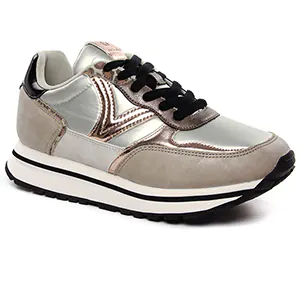
Baskets À Plateformes | Baskets Doré Avec Talon Compensées Gold | Primadonna Collection Femme « Hylia

AONEGOLD Baskets Talon Compensées Femme Plateforme Chaussure de Sport Casual À Lacets Baskets Cuir Mode Chaussures Talon de 10 cm à L'intérieur Hausse(Blanc 309,Taille 34) : Amazon.fr: Mode

Femme Baskets Mode en Tennis Chaussures Toile Talon Compensé Chaussures de Sport Fermeture Lacets Taille 40 41 42 (35 EU, Bleu) : Amazon.fr: Mode

Achat chaussures Mustang Shoes Femme Basket, vente Mustang 1319-305-100 Off white - Basket talon compense F

Femme Baskets Compensées Tendance Chaussure de Sport Marche Fitness Sneakers Basses Compensées 8 cm/ 35-43 EU(35) : Amazon.fr: Mode

Achat chaussures Mustang Shoes Femme Basket, vente Mustang 1319-305-100 Off white - Basket talon compense F

Baskets Mephisto, baskets à talons compensés femme en cuir velours bleu | Igert Chaussures&Maroquinerie

Baskets en toile à talon compensé pour femme - Hauteur du talon : 7 cm - pour le sport et les loisirs - Taille 35-43 - plusieurs couleurs, 29 coton blanc chaud., 38 EU : Amazon.fr: Mode

Baskets compensées montantes pour femme, baskets à plateforme pour femme, bottines de sport légères à talon haut et à la cheville, confortables, chaussures de sport à la mode, escarpins : Amazon.fr: Mode

chaussure femme talon chaussures casual talons basket luxe baskets femme sneakers Baskets à semelles compensées pour femmes, chaussures respirantes à talons hauts, décontractées, vulcanisées, à plateforme, mode automne - AliExpress










































